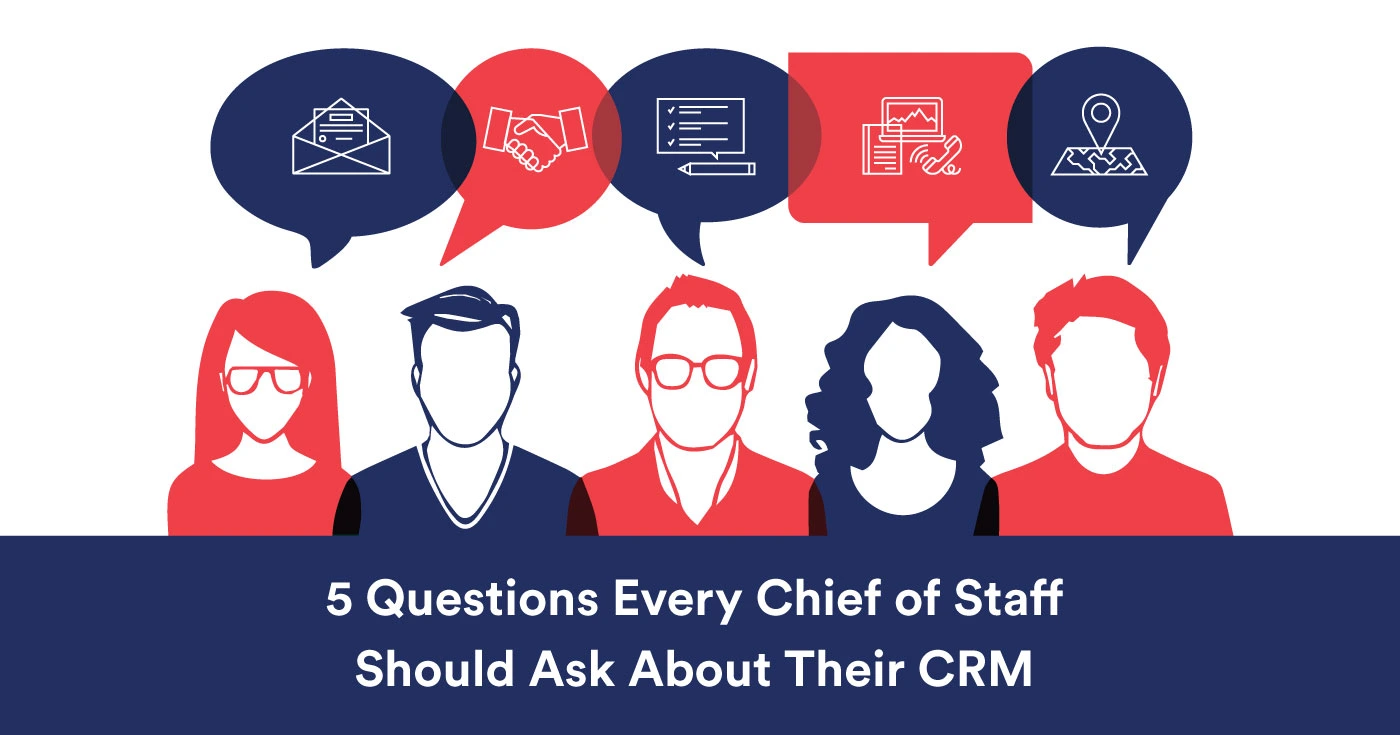
Over the last year and a half, we’ve learned to become creative in the ways we connect to each other, trading dinner parties for virtual coffee dates and happy hours for Zoom game nights. But has this creativity in connection extended to the congressional office?
In the past, offices relied on town halls and in-person events to foster relationships with their constituents, while championing mail turnaround times as a key metric for success. But those have obvious limitations. Representing constituents at a national level requires a more complex mix of distilling public sentiment, building trust, and producing legislative results.
To show those results you need a more holistic approach to metrics that includes tracking sentiment, updating constituents on legislation, solving their problems, and yes, replying to their mail. Together, these goals can measure a fuller picture of what it means to succeed in a congressional office, but to do it you need a constituent relationship management (CRM) tool that allows you to easily track those goals. Getting the right system starts with asking the right questions:
1. Should you be measuring mail turn-around time or quality?
The time your office takes to reply to constituents’ campaign mail, while important, isn’t the only thing that matters. To get a more accurate picture of success, you also need to consider the quality of those replies.
Campaign mail can be turned around in just a few clicks if you’re sending a simple form letter, but the review process might hold things up. Mail turnaround stats can be misleading as speed often trumps all in these comparisons. However, in many cases, spending more time on a personalized letter has greater relationship-building payoff than a fast turnaround.
Turn-around times are only one part of the full picture of your mailroom success — quality and human processes matter just as much.
2. How difficult is continuing engagement after the first touch?
When a constituent contacts a congressional office, the response they receive lets them know their ideas have been heard — but engagement shouldn’t stop there. Second or third touches with engaged constituents should carry more weight than one-off communication. Regular communication fosters trust between your office and constituents.
The House updated its rules so that notifications to constituents on bills of previous interest no longer have to be approved through franking. This is an opportunity for your office to quickly bolster engagement and build trust with your constituents using fewer resources.
3. Can your CRM show the complete picture of constituent sentiment?
In our age of information, access to data doesn’t mean it’s easy to use or interpret. Data needs both integration and visualization for maximum effect.
Having a clear understanding of your constituent demographics, the issues they care about, and their level of engagement requires robust tools that include mapping and reporting functionalities. Knowing your district’s constituents ensures your outreach and targeting will be relevant and engaging.
Often, congressional offices house constituent data in multiple platforms, creating disconnected segments that are difficult to use in relation to one another. When data is removed from its siloed environments, you’ll be able to see everything you know about your constituency in one place, and truly harness the full power of constituent data.
4. Can your data be used to pull targeted audiences?
Voter data is one of the most efficient ways to learn about your constituents, but it’s of little use unless you can take those insights and put them into action. By integrating demographic data, bill interest, and organically gathered data, you can more efficiently target your messages to the right constituents.
By creating micro-targeted audiences with comprehensive data, you can engage your constituents with specific messages about the issues that matter most to them. This customized approach powered by data builds trust between your office and your constituents, which is invaluable to any congressional office.
5. Is casework integrated into the environment?
Discussions of data, visualization, and integration drive focus on the numbers, but no constituent can be reduced only to preferences or demographics. Constituents have incredibly real and personal problems that they entrust to their representatives. A good CRM needs to be able to handle anything, from a recommendation to a military academy to assistance with a federal benefit request.
Congressional casework is unique in that it requires communication between three or more parties: the constituent, a staffer, and one or more agency contacts. Each case takes time, patience, and organization to complete — a typical ticketing system won’t do.
Many cases are taken care of through an outside agency but require a staffer’s facilitation until closed. This complexity demands a transparent system of logging and organizing cases that enables collaboration if critical assistance is to be delivered in a timely manner.
Are you interested in learning about Fireside’s CRM and how it can help you? Learn more with a demo today!
